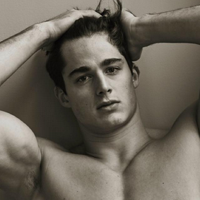Claudia Schiffer type de personnalité MBTI
Personnalité
"Quel type de personnalité est Claudia Schiffer? Claudia Schiffer est un type de personnalité ISTJ dans MBTI, 1w9 - so/sp - 136 dans Enneagram, dans Big 5, dans Socionics."
Claudia Schiffer’s career and personality are best understood through the lens of ISTJ (Si–Te–Fi–Ne) with an Enneagram 6w5 (sp/so) profile. Her trajectory demonstrates a methodical, disciplined personality that thrives on structure, professionalism, and consistency—hallmarks of Si–Te—rather than the expressive individuality of Fi–Se types or the reformist moralism of Type 1. 1. Si Dominance: Precision, Routine, and Reliability Schiffer embodies Si through her extraordinary discipline and attention to detail. She openly attributes her success to structure: “A proper routine will lead to a productive life.” She keeps detailed lists of mistakes she never repeats: “I can’t say I don’t make mistakes. I do make them, but I try to think of mistakes… as experiences I can learn from. I have lists of things where I remind myself I cannot do it this way again.” Her work ethic reflects Si’s procedural strength. Stories of her working through the night until dawn, then catching a Concorde flight to another shoot without complaint, are legendary. Karl Lagerfeld famously described her as “a smooth-running German business machine,” a comment consistent with Si–Te efficiency rather than Ni-driven artistry or Se spontaneity. Her longevity in the fashion industry stems from this preference for standards and consistency: Schiffer maintained a classic, glamorous persona for decades rather than reinventing herself constantly, a hallmark of Si’s preference for continuity over reinvention. 2. Te Auxiliary: Objectivity and Business Acumen Schiffer’s Te is as visible as her beauty. She speaks bluntly about separating emotion from business: “You should never bring emotions into your business or career.” She is widely regarded as one of fashion’s most astute businesswomen. She negotiated multimillion-dollar deals, curated her own calendar projects, and made deliberate career decisions like turning down George Michael’s iconic “Freedom” video because it was “off brand.” This pragmatic, brand-protective logic reflects Te: external reasoning and decision-making geared toward efficiency and measurable success. Schiffer’s structured approach to fitness and diet also reflects Te at work. She meticulously controls her schedule, food intake, and exercise routine “for energy, not just figure,” indicating that Te logic, rather than Se indulgence, drives her lifestyle. 3. Fi Tertiary and Ne Inferior: Integrity and Controlled Creativity Though Schiffer’s personality seems “icy,” there is a clear Fi tertiary component: firm values and privacy boundaries. She refuses nude modeling, sues paparazzi for privacy violations, and consistently projects understated elegance (“I’m not a jewelry person… It bothers me when I have a lot of things on. It’s not me. I’m more simple and practical.”). Her creativity shows through Ne-inferior exploration—curating exhibitions, publishing books, or branching into film—but always within a tightly controlled framework. Unlike Ni-dom models of visionary reinvention, Schiffer innovates cautiously, extending her brand without risking its core identity. 4. Why She’s Not ISFP ISFP typing is common due to her beauty and artistic field, but her personality is diametrically opposed: ISFPs are Fi–Se, leading with subjective expression and sensory indulgence. Schiffer instead embodies objectivity and systemization (Te), not Fi-dom authenticity. Her Se is procedural, not spontaneous; she perfected runway work through training, not instinctive flair. She is a brand architect, not a style iconoclast—classic ISTJ strengths. 5. Why She’s Not 1w9 Some may propose 1w9 due to her discipline and criticism of “heroin chic,” but her tone is pragmatic, not moralistic. She frames unhealthy imagery as bad for business and harmful for girls, but without crusading zeal. The precision, risk-awareness, and guarded privacy point instead to a 6w5 core: Vigilance and boundary-setting (walls around her home, security for runway shows). Loyalty to brands and mentors like Karl Lagerfeld. A cerebral edge (logbooks of lessons learned) and a self-protective sp/so instinctual stack. Conclusion Claudia Schiffer is the quintessential ISTJ-6w5 (sp/so): structured, disciplined, and pragmatic, with a polished public persona masking a deeply private, security-conscious temperament. Her success comes not from Fi-Se artistry or Type 1 reformism, but from Si mastery and Te efficiency: she systematized modeling into a career empire, becoming the world’s highest-paid supermodel with over 1,000 magazine covers—all while avoiding scandal. She exemplifies a rare archetype: the introverted, methodical strategist in a glamour-driven industry, proving that professionalism and structure can be as iconic as beauty itself.
Biographie
Claudia Maria Schiffer (German pronunciation: [ˈklaʊ̯dɪa ˈʃɪfɐ]; born 25 August 1970) is a German supermodel, actress, executive producer, and fashion designer currently living in England. Starting with being the face of Guess since the late 80s, she rose to fame in the early 1990s as one of the world's most successful models. Schiffer was also the muse of Karl Lagerfeld, becoming the original Chanel Bride. In her early career, she was compared to Brigitte Bardot.
Personnalité correlate

Jung Hoyeon

Gigi Hadid

Bella Hadid

Naomi Campbell

Hailey Bieber

Cara Delevingne

Cindy Kimberly

Adriana Lima







